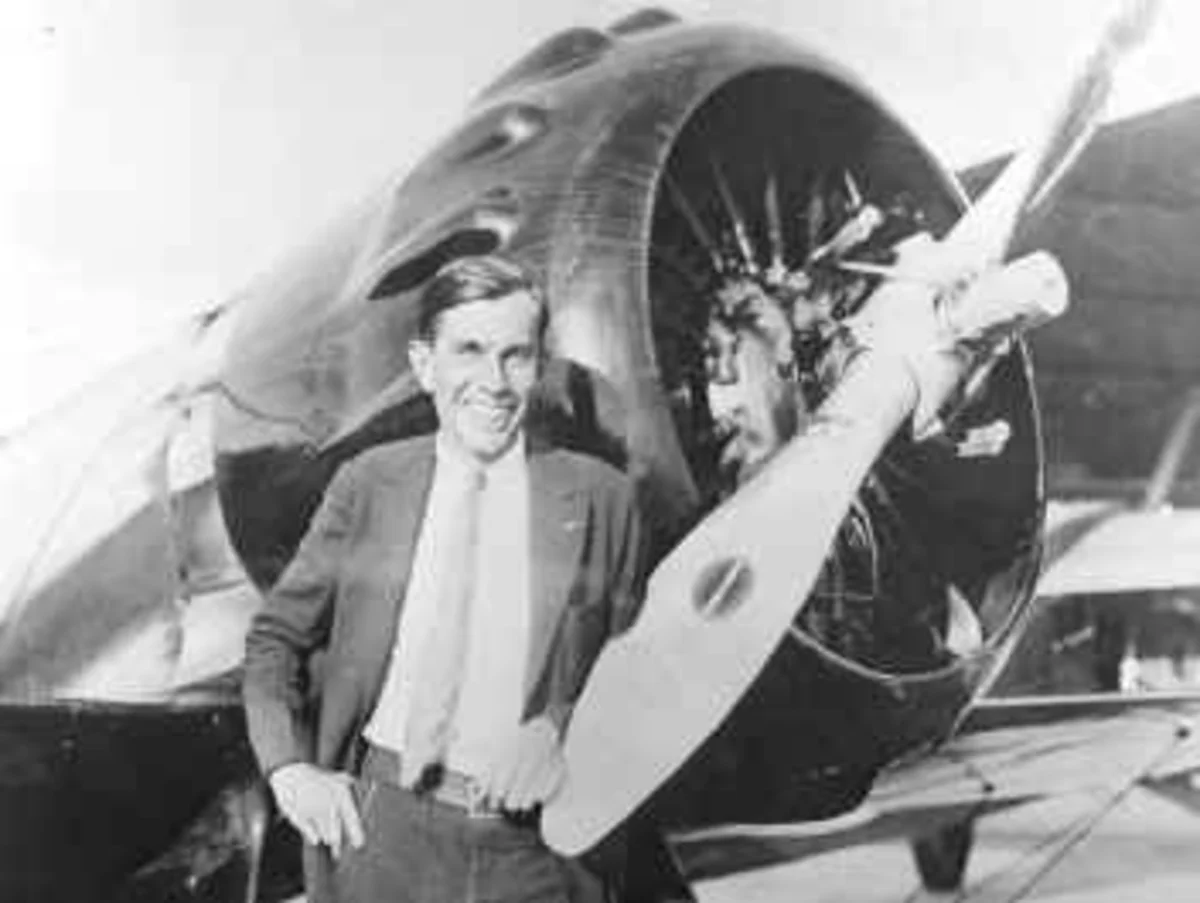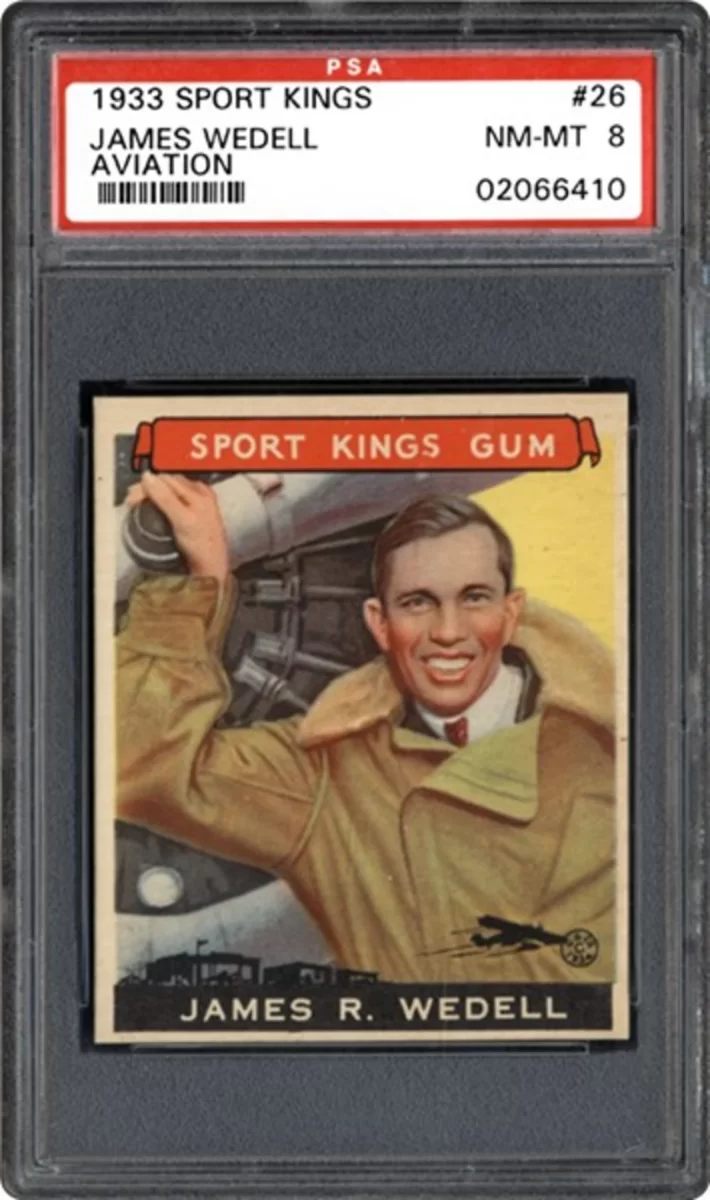![]()
By Tracy Gupton
Historic Columbia Cemetery is the final resting place of 1930s aerial speed record holder Jimmie Wedell, who set a new speed record for land planes in September of 1933. Wedell was tragically killed in a plane crash the following summer, his life cut short at the young age of 34.
In addition to breaking the speed record by piloting an airplane of his own design, topping out at 305.33 miles per hour at the international air races at Curtiss Field in Glenview, Illinois, in September of 1933, Wedell also held numerous speed records for flights between various cities. He won the Thompson Trophy air race, also in 1933, and won 14 “distinguished finishes” (top five) in the Thompson and Bendix Trophy races. Residents of West Columbia in the era of the 1920s and 1930s were familiar with Jimmie Wedell flying over the town in planes he had made himself.
“My great aunt and uncle owned a garage in downtown, now a BBQ place, that Jimmie would bring his plane to for servicing,” recalled Lou Westbrook Bohot. “The full story was told to me by Donna Loggins (whose Chesney’s Jewelry store across the street from Republic Barbecue recently celebrated its 100th anniversary of being in business in West Columbia).”
Donna Ruth Chesney Loggins said, “Jimmie’s sister worked at Farmer’s,” the West Columbia grocery store owned by Harold Beal that is now Jenn’s Furniture.
Pat Harper Patterson, a 1957 graduate of West Columbia High School, said she remembers Jimmie Wedell’s sister May “riding a horse all over West Columbia when I was very young.”
Amanda Brooks said that Jimmie’s sister May Wedell was married to local barber Meredith McCann and Trey Lee McCann said, “My grandmother told me stories about (Jimmie) landing his plane on the old football field in West Columbia.” Trey’s grandfather, the late Jack McCann, was the half-brother of May Wedell’s husband, Meredith McCann.
On May 20, 1927, Charles Lindbergh’s historic nonstop flight from New York to Paris inspired pilot’s and entrepreneurs worldwide. Jimmie Wedell was planning a similar historic flight from London to Melbourne, Australia, that would have made headlines across the globe if he had completed it successfully. But he did not live long enough to attempt it.

A story in The Galveston Daily News, bearing the headline, “Texas City’s King of the Sky,” was published in the September 4, 2011, edition of the Galveston County newspaper. That story reminded readers of Wedell’s outstanding accomplishments during his lifetime. James Robert Wedell was born March 31, 1900, in Texas City where his parents, Robert and Ida Wedell, operated a tavern.
His brother Walter came along the following year, born in November 1901, while sisters Elizabeth and May joined the Wedell family later. When Edith Ida Linnet Wedell died at 46 in 1923, the Wedell brothers had to help their father take care of their younger sisters following their mother’s death. Jimmie quit school when he was in the ninth grade and eventually opened the Black Star Garage behind the family home in Texas City. Both Jimmie and Walter Wedell were good mechanics and began supporting their family by repairing cars and motorcycles.

Jimmie lost the vision in one of his eyes from a motorcycle accident when he was a teenager. So, when America became embroiled in World War I, his brother Walter enlisted but Jimmie’s vision deficiency kept him out of the military. Jimmie learned to fly when the first U.S. Army Airfield was established in Texas City in 1913. Barnstorming along the Texas and Louisiana Gulf Coast in airplanes of his own design preceded Jimmie Wedell’s partnering with millionaire Harry Palmerston Williams in 1928 to form We-Will Flying Service in Patterson, Louisiana, in St. Mary Parish.
“Wedell had the design genius, while Williams held the capital and business background,” a story found online at www.louisianastatemuseum.org revealed. “The We-Will Flying Service built airfields in Patterson and eastbank Jefferson Parish. The partners designed and built airplanes, raced aircraft, gave flight instruction, worked with aviation mechanics students at the Delgado Trades School (in New Orleans) and flew humanitarian missions that ranged from missing person searches to the speed transport of an infant from Houston to Baltimore for a life-saving operation at Johns Hopkins Hospital.”
Taken from another old newspaper clipping were these words about Jimmie Wedell’s efforts to transport the infant from a Houston hospital to Baltimore: “The veteran pilot’s most recent exploit was the flying of 5-month-old Sue Trammel from Houston to Baltimore last December (1933) for an emergency operation. Through wind, fog and snowstorms, when almost all planes were grounded because of the weather, Wedell made the desperate 1,400-mile flight safely, in time for Johns Hopkins surgeons to perform the delicate operation that saved the baby girl’s life.”
But Jimmie Wedell could not save his own life when a horrible event occurred six months later. “Tragically, both Wedell and Williams were killed in plane crashes less than a decade after their first meeting,” a story from the May 2012 online post of the Office of Cultural Development, Department of Culture, Recreation and Tourism stated. “On June 24, 1934, Wedell died when his biplane nosedived into a rice field near Patterson, shortly following takeoff for a flight lesson. Less than two years later, Williams was killed on May 19, 1936, when his plane crashed immediately after takeoff from the Baton Rouge Airport following a conference with the Louisiana governor.”

Wedell’s death received national attention where he was remembered for his love of speed, his innovations in the design of racing planes, and his reputation for donating his time and talents to those in need. Time magazine ran a story about his tragic death near Patterson, Louisiana. One newspaper clipping from 90 years ago said, “The world-famous pilot was instructing Frank Sneeringen, 21-year-old student pilot of Mobile, Alabama, when the plane, a Gypsy Moth English plane, went into a spin and Wedell was unable to regain control.
“The crash occurred late Sunday a mile south of Patterson, Louisiana, where Wedell and his partner, Harry P. Williams, wealthy lumberman, built the racing planes in which Wedell consistently smashed records. Wedell was killed instantly. Sneeringen, who was making his first flight, was critically injured.”
Following a funeral for Jimmie Wedell in New Orleans, his body was transported to West Columbia, Texas, for burial at historic Columbia Cemetery where his mother and grandparents are interred. The famous pilot is buried near his sister, May Wedell McCann (1909-1987). Other family members buried in the historic West Columbia cemetery are Edith Ida Linnet Wedell, Jimmie’s mother, his grandparents, James Alfred Linnet and Elizabeth Isabella “Lizzie” Specht Linnet Westmoreland, and his great-grandparents, German immigrants Friedrich Wilhelm Specht (1821-1906) and Mary Schaefer Specht (1821-1907). Jimmie’s father, Robert Carl “Bob” Wedell, is buried at the Brazoria Cemetery. Bob Wedell passed away at 67 July 23, 1942, at his Brazoria home.
Most likely, Jimmie Wedell is one of only two people buried at Columbia Cemetery who appeared on a bubble gum card, the other being former pro football player Buddy Tinsley. Wedell was on a 1933 Sport Kings Gum trading card.
Jimmie’s stepmother, Ida Bell Wedell, married former Clemens Prison Farm guard Lawrence Ezekiel Eason, of Brazoria, following the death of Eason’s first wife, Carrie, in 1950. At the time of his death in 1942, Bob Wedell was in the restaurant business in Brazoria.


His mother Ida Belle Eason was married to my husband’s grandfather Lawrence Ezekiel Eason. They lived in Brazoria and she is buried there. I was so inspired by all the newspaper clippings they keep. Great article.